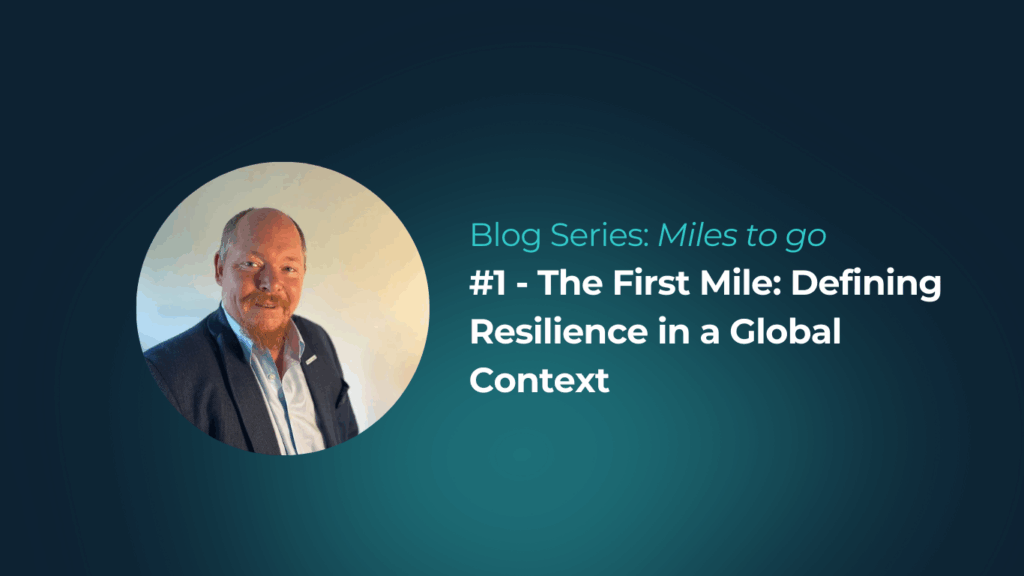Author: Owen Miles, VP Solutions Engineering EMEA for Restrata
Blog Series: ‘Miles to Go’ – Exploring the foundations of resilience & continuity
#1 – The First Mile: Defining Resilience in a Global Context

Resilience is one of those words that gets thrown around a lot – especially in boardrooms, strategy documents, and crisis response plans. But what does it really mean?
Too often, resilience is defined narrowly: as a checklist or compliance requirement. But in reality, it’s far more nuanced. It’s shaped by geography, industry, culture, and the lived experiences of the people behind the plans.
In some organizations, resilience is synonymous with business continuity – keeping operations running no matter what. In others, it’s about crisis response – reacting swiftly and decisively when things go wrong. And in many, it’s about protecting people first, then assets, then reputation.
Resilience, at its core, is the ability to adapt, respond, and recover – quickly and effectively. It’s not just about bouncing back; it’s about bouncing forward. The most resilient organizations don’t just survive crises – they learn from them, evolve, and emerge stronger.
But here’s the challenge: resilience isn’t static. What worked last year may not work tomorrow. Threats evolve. Teams change. Systems age. That’s why resilience must be continuously redefined – not just globally, but locally, operationally, and culturally.
At Restrata, we see this every day. Our technology gives organizations the visibility and control they need to respond in real time. Our consultancy helps them build the frameworks, processes, and culture that make resilience sustainable. It’s not one or the other—it’s both. Because resilience isn’t just about having the right tools. It’s about knowing how to use them, when to adapt them, and where to embed them.
The first mile of the journey is about clarity. It’s about asking: What does resilience mean to us? Not in theory, but in practice. Not in general, but in our specific context. Because if the definition isn’t clear, the strategy won’t be either.
Action Steps: Reflect on how your organization defines resilience. Is it shaped by your geography, industry, or culture? Start the conversation internally – and challenge the assumptions.
Next Week: We’ll dig into why shortcuts in business continuity planning don’t work – and how depth makes all the difference.
